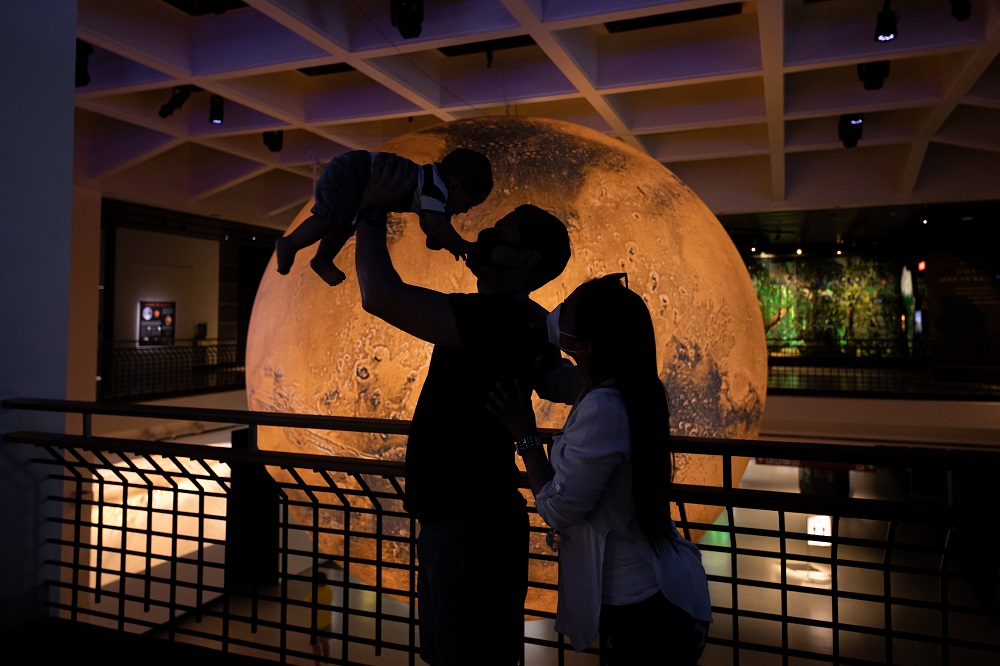Mars continues to fade a little bit each night now that Earth has overtaken it and is pulling away. However, it fades out gradually; Mars remains brighter than the stars around it in February 2021. And Mars is high in the southwest–well placed for observing right as night falls.

Now on display at HMNS.
Jupiter and Saturn emerge slowly from the Sun’s glare into the morning sky late this month.
Venus gets lost in the Sun’s glare this month and is hard to see.
Taurus, the Bull is high in the south. Look for the Pleiades star cluster above reddish Aldebaran. Dazzling Orion, the Hunter takes center stage on winter evenings. Surrounding Orion are the brilliant stars of winter. Orion’s belt points down to Sirius, the Dog Star, which outshines all other stars we ever see at night. The Little Dog Star, Procyon, rises with Sirius and is level with Orion’s shoulder as they swing towards the south. To the upper left of Orion’s shoulder is Gemini, the Twins.
Under Sirius and low to the southern horizon this month is a star that most Americans never get to see—Canopus. Representing the bottom (keel) of the legendary ship Argo, Canopus is the second brightest star ever visible at night. Thus, it is clearly noticeable along the southern horizon on February and March evenings. However, you must be south of 37 degrees north to see Canopus rise. (This is the line that divides Utah, Colorado, and Kansas from Arizona, New Mexico, and Oklahoma.)

This star map shows the Houston sky at 9 pm CST on February 1, 8 pm CST on February 14, and dusk on February 28. To use the map, put the direction you are facing at the bottom.
Taurus, the Bull, is almost overhead along with Gemini, the Twins. Dazzling Orion, the Hunter is high in the south, with his two dogs behind him. Sirius, the Big Dog Star, is the brightest star we ever see at night. Look for Canopus on the southern horizon below Sirius. Leo, the Lion, rises in the east. In the north, the Big Dipper has re-entered the evening sky.
Moon Phases in February 2021:
Last Quarter Feb. 4, 11:37 a.m.
New Feb. 11, 1:06 p.m.
1st Quarter Feb. 19, 12:47 p.m.
Full Feb. 27, 2:17 a.m.
The New Moon of February 11 is the second New Moon after the winter solstice. Therefore, it marks Chinese New Year. The Year of the Rat ends and the Year of the Ox begins.
Our George Observatory remains closed. We are preparing ways to operate safely in light of COVID-19 and making the last renovation to our newest exhibits, and plan to open as of March 15, 2021!
Clear Skies!

